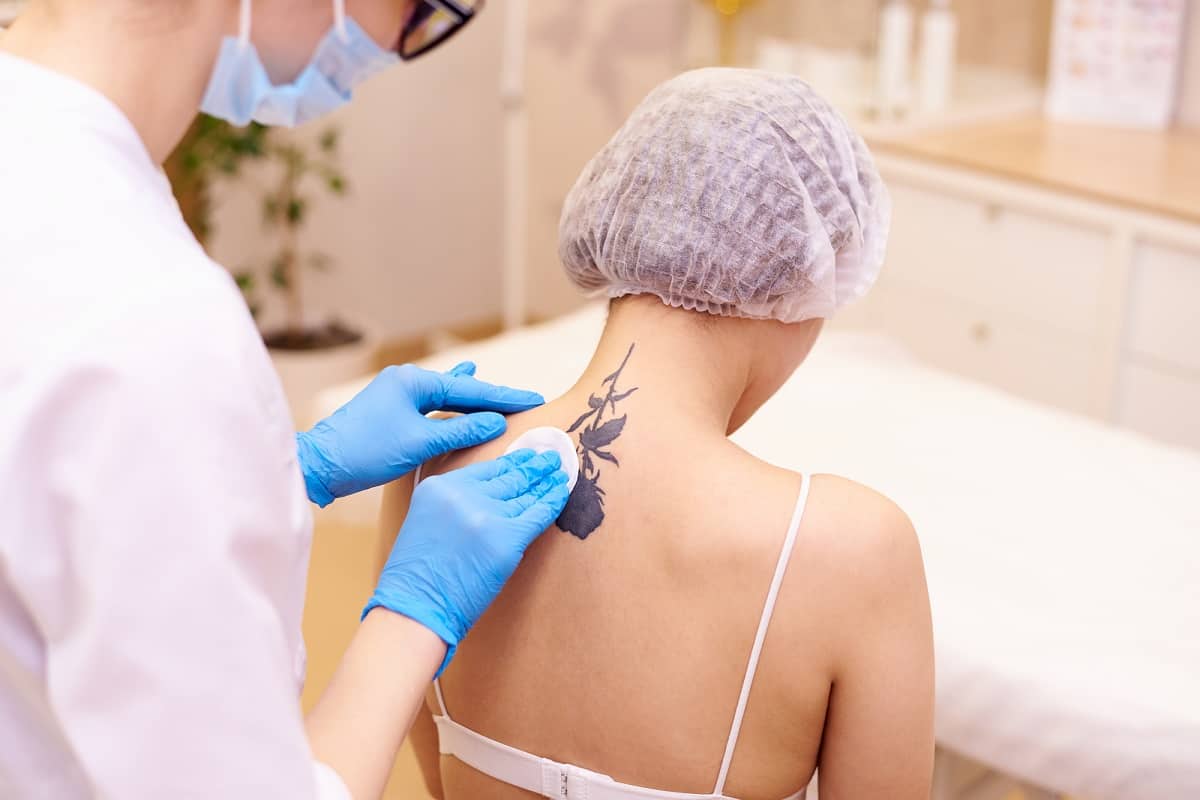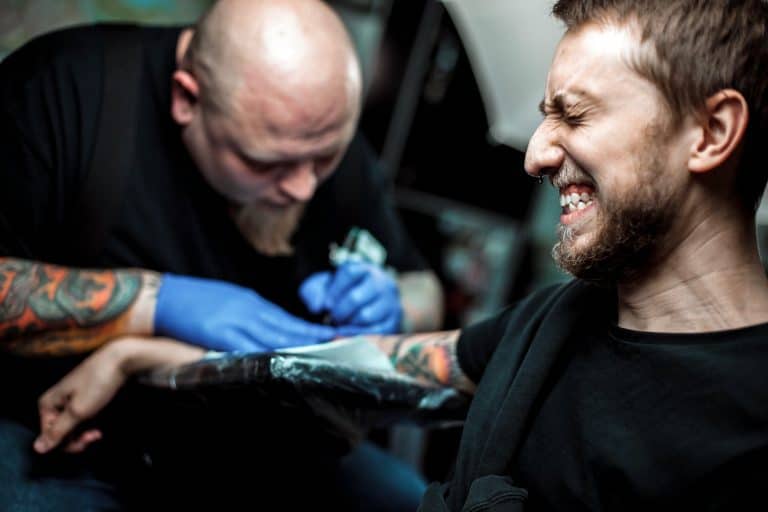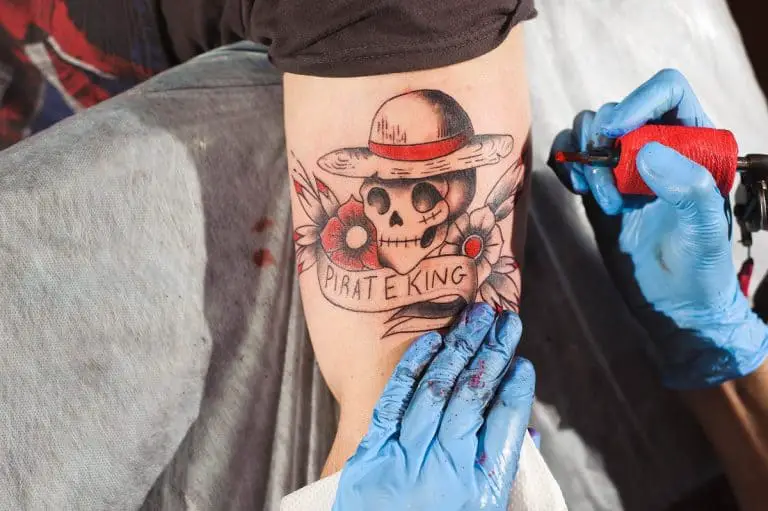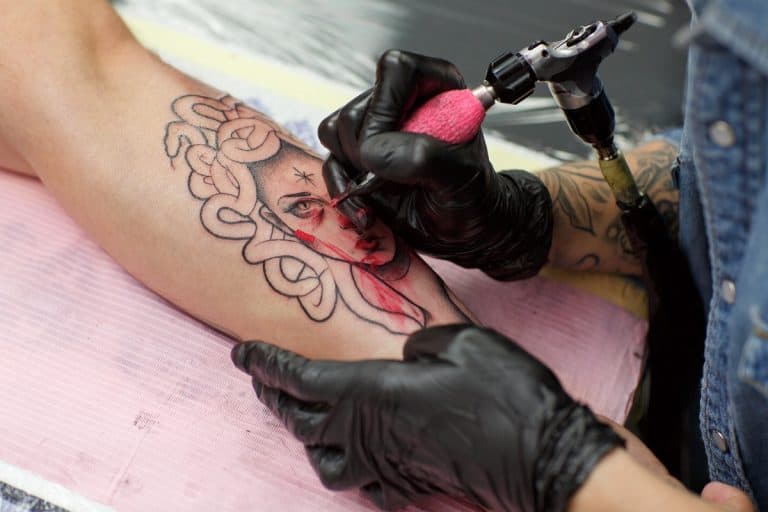Does Tattoo Removal Leave Scars: Everything You Need To Know
Getting a tattoo means you’re getting a permanent piece of body art meant to last you a lifetime. However, sometimes people don’t like their tattoos and how they turned out, or they get tired of having certain tattoos. In some cases, tattoos start fading away and lose their initial vibrancy. So, what can one do to get rid of a permanent tattoo? Well, there are a few options to remove a tattoo, laser tattoo removal being the best and most effective one.
Now, tattoo removal is difficult and it takes time, effort, and money to work. Furthermore, it generally hurts like hell and carries a number of other potential side effects, including scarring. Therefore, if you’re thinking about going for tattoo removal, you’re at the right place. In the following paragraphs, we’ll discuss several tattoo removal methods and their potential of leaving a scar in place of your tattoo. So, let’s dive right in!
Different Tattoo Removal Methods – Do They Leave Scars?
Laser Tattoo Removal
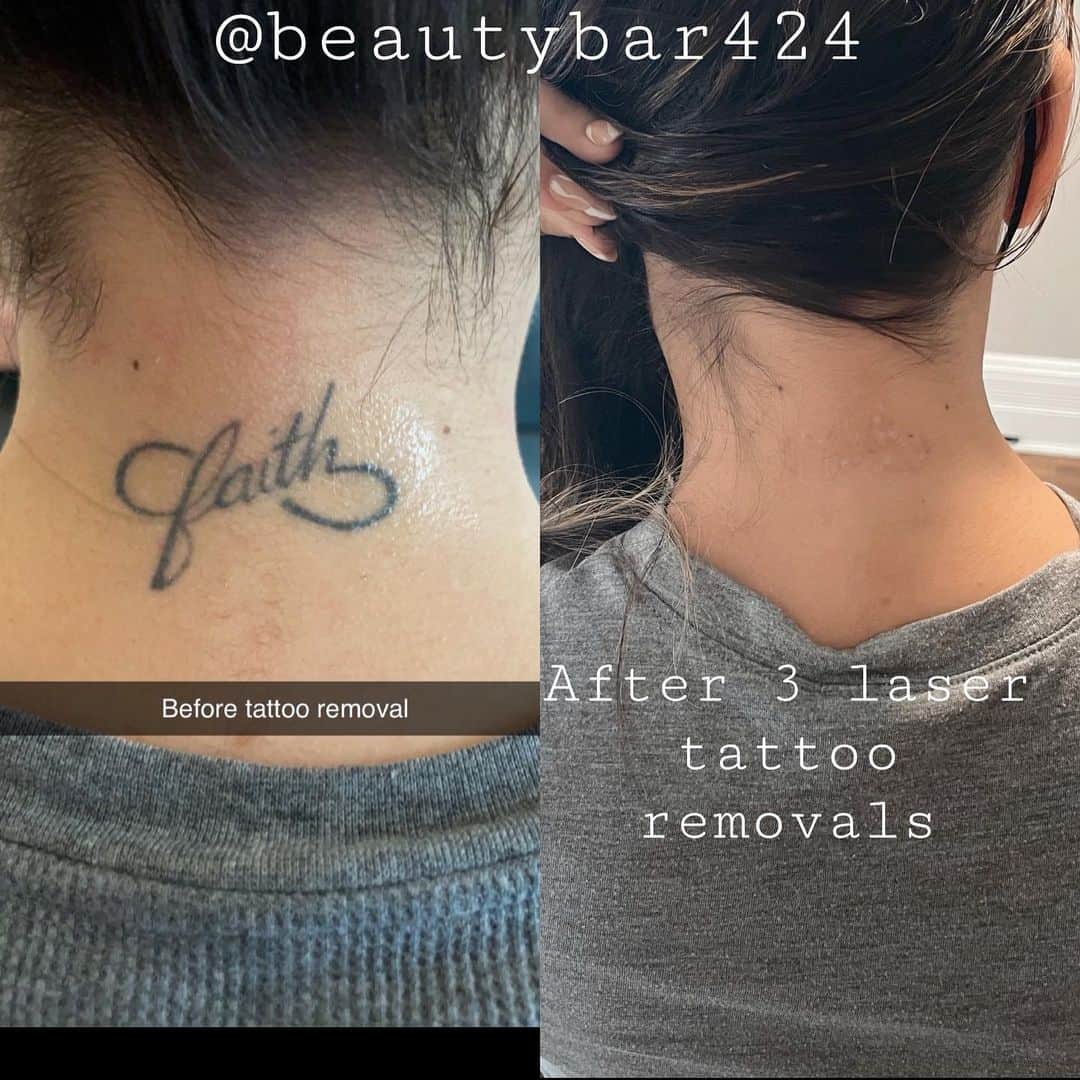
Laser tattoo removal is the most efficient tattoo removal method. It is also the least invasive so the chances of this method resulting in scarring are very slim. But, before we get into this, let’s first talk briefly about how laser tattoo removal works. This might give us some insight into why this method might or might not cause scarring.
Now, a laser tattoo removal is generally performed using Q-switched or Picosecond lasers, which work quickly in targeting ink in the ink, heating it up, and turning it into small ink cells which are then removed from the body thanks to your lymphatic and immune system.
These tattoo removal lasers are highly effective in removing the ink because they send infrared light into the ink, as well as the heat or shock waves which then ensure the pigment dissipates, getting rid of the original tattoo. Because of the heating, people are generally scared their skin will get burned, and as a result, leave the session with a scar instead of a tattoo.
However, this surely might be an outcome of a laser removal session done by an untrained ‘professional’ who uses outdated technology. In order to get proper laser removal, it is essential to have it done by a trained and experienced professional who uses either Q-switched or Picosecond lasers.
However, we do have to talk about other factors that can contribute to scarring after laser tattoo removal;
- Hypersensitive skin is more prone to skin damage during laser removal, which in turn increases the chances of potential scarring.
- The placement of the tattoo also plays an important role; if the tattoo is placed in a highly sensitive area, where the skin is thin and has a lot of nerve endings, chances are scarring will occur.
- Now, one of the biggest issues with laser tattoo removal is that it works perfectly fine with darker tattoos. However, if a tattoo is light in color, it will require much more removal sessions, which increase skin damage and the potential for scarring.
- And finally, skin damage and scarring seem to be more prominent in laser removal of bigger tattoos. It is not recommended to do laser removal with large-sized tattoos.
Now, we do have to mention that laser tattoo removal isn’t the fastest way to get rid of a tattoo either. In the best-case scenario, where the tattoo is dark/black and placed where the skin is thicker and strong, it can take up to 10 sessions to fully get rid of the pigment.
When it comes to light-colored tattoos, the infrared light has a harder time targeting the ink, so it may take you between 20 and 25 sessions to get rid of the pigment. The bigger the number of sessions, the higher the potential for skin damage and scarring.
So, does laser tattoo removal cause scarring? Not necessarily!
If the removal is done properly, by a trained and experienced professional who uses up-to-date technology, everything should go fine. It is also important to take care of the skin in the aftermath of laser removal to help it regenerate and heal. This also prevents the formation of scarring. However, if the removal is done by someone untrained, using an outdated laser, you can expect some skin burning, and as a result, scarring as well.
So, always make sure to get your laser tattoo removal at an established, reputable laser removal clinic. Such clinics have highly professional staff that works impeccably and have your health and satisfaction and the utmost focus and goal.
Surgical Tattoo Removal – Surgical Excision
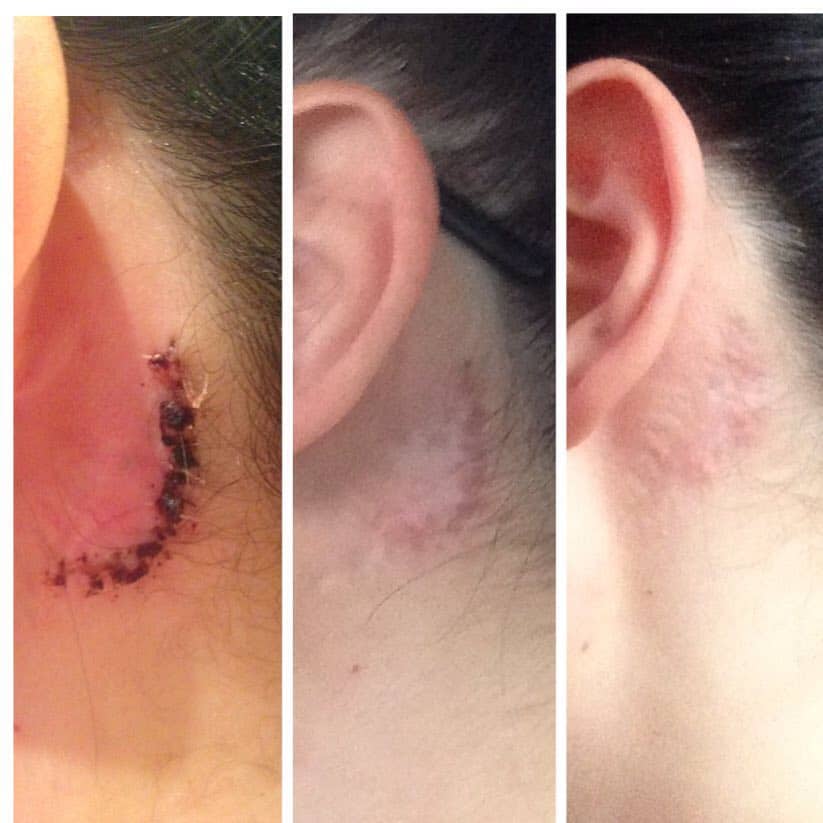
Surgical excision is a tattoo removal method where a surgeon cuts out the tattoo ‘the skin that is tattooed and contains pigment), and stitches together the remaining skin. Now, this is a removal method only recommended for small tattoos. The reason for this is that the skin that is brought together heals into a scar that is generally of the length of a tattoo. So, the smaller the tattoo, the smaller the scar.
This method is executed by using local anesthesia in case of a really small tattoo, or even general anesthesia in case of a medium-size tattoo. Once the remaining skin is stitched together, you’re looking at a post-surgery healing period which can last from two weeks to a month.
In order to keep the scar as small as possible, it is essential to properly take care of the wound post-surgery. Bandages need to stay on for at least 48 hours, and when they’re removed, you’ll need to clean the wound daily (using lukewarm water and soap).
So yes, surgical tattoo removal will leave a scar. The size of the scar will depend on your tattoo size as well as the post-surgery wound care.
Dermabrasion
Dermabrasion is also a surgical tattoo removal method, but it doesn’t actually involve surgery. Instead, this removal method is performed by using a medical abrasion or grinding tool to remove the epidermis and dermis of the tattooed skin. So, by removing these layers of the skin, the tool is also removing the pigment or the tattoo.
However, even though this method sounds straightforward, it is pretty invasive and painful. In order to perform this method, a medical professional will provide local or general anesthesia. Dermabrasion will create an open wound in place of the tattoo as the grinding tool removes skin layers. So, post-procedure aftercare is essential for the wound to heal properly, without infection or inflammation.
Now, a wound caused by dermabrasion can take a long time to heal. It is estimated to take up to two weeks for the wound to heal. This period prolongs in case your tattoo requires more than one dermabrasion session. As a result, dermabrasion causes serious scarring, even when performed by trained professionals.
Chemical TCA Peel Tattoo Removal
Chemical peel tattoo removal is done using the TCA or the trichloroacetic acid to remove tattoos in a similar fashion to the dermabrasion method. The acid is applied to the tattooed skin which then removes the outer layers of the skin, as well as the tattoo pigment.
Now, compared to dermabrasion, a chemical peel is painful but at bearable levels. It usually doesn’t require local or general anesthesia but in certain cases pain alleviation is welcome.
But, even though chemical peel removal sounds almost perfect, we need to mention that the acid does create an open wound, just like in dermabrasion. The wound takes time to heal, so proper aftercare is essential to avoid inflammation and infection. It can take the wound anywhere between 5 to 10 days to heal, depending on the size of the tattoo.
Generally speaking, there will be some scarring left after a chemical peel, but it isn’t as severe as in dermabrasion removal.
Tattoo Removal and Scars – FAQs
Do Tattoo Removal Scars Go Away After Healing?
When it comes to laser removal, there aren’t generally scarring issues if the procedure is done by a trained professional at a reputable clinic. But, in case you do experience scarring after laser removal, you can expect it to be long-term.
The same applies to other tattoo removal methods, especially surgical tattoo excision. Dermabrasion scars are also long-term, while the scars from chemical peels can be minimized even if they form after the procedure.
Note: If you notice a scar after your tattoo is removed using a laser, chances are you’re looking at a scar formed after getting tattooed. Sometimes the skin gets pretty damaged during tattooing, so as the tattoed skin heals, it also forms a hidden scar.
Can I Get Laser Tattoo Removal as a Person of Color? Will It Affect My Skin Differently?
Generally speaking, if a person of darker complexion gets laser tattoo removal, there is a chance that hypopigmentation will occur in the place where the tattoo used to be. Now, this is a rare occurrence, bear in mind. It can be prevented with proper aftercare following the laser removal session.
Unfortunately, once you experience hypopigmentation, you’re dealing with a long-term skin change. So, make sure to get the laser removal treated at a reputable clinic to avoid any potential skin issues.
How Can I Prevent Scarring After Tattoo Removal?
Unless we’re talking about surgical tattoo excision, where scarring is inevitable, there are ways you can minimize and prevent scarring from occurs after other removal methods. Here are some of the tips you can utilize;
- Stay Hydrated – Proper hydration will help your body flush out ink faster and promote a better and faster immune response. This means that more white blood cells will, thanks to the lymphatic system, rush to the affected area and clean out the remaining ink. As a result, your body will work faster to heal everything and ensure no damage remains.
- Don’t Pick the Wound – After tattoo removal, it is essential to stay away from the wound. During the first few days, you shouldn’t remove bandages. Later, when the bandages are gone, the only thing you can do is wash the wound. So, do not pick the scabs or blister and let the wound dry and heal on its own. By picking it, you’ll introduce harmful bacteria to the wound and cause an infection, which of course will leave a scar.
- Don’t Drink and Smoke – Drinking and smoking affect your immune system negatively. Both can prolong the healing period after the tattoo removal and make the overall process more uncomfortable and painful. It is recommended to stop drinking and smoking even before the removal procedure.
- Get the Removal Done at a Clinic – If you want to get your tattoo removed, the only place to do it is at a professional medical clinic. There, you’ll be treated by qualified, trained, and experienced professionals who use the latest technology and lasers. With such a proper treatment, you won’t be at risk for skin damage or scarring.
Final Thoughts
Laser tattoo removal is your best chance for getting rid of a tattoo without severe or any scarring for that matter. If done properly, laser removal generally goes smoothly, without severe skin damage. Proper aftercare after every removal session is key to keeping the skin healthy and helping it regenerate and heal.
When it comes to other removal methods, you can almost certainly expect scarring. This especially applies to surgical excision and dermabrasion, since they’re the most invasive removal methods. Chemical peels can also cause skin damage and scarring, but even then the damage/scarring is minimal and mild.
What we can suggest as a final recommendation is to always get such procedures done by medical or trainer professionals at reputable clinics. That is the only way to get the removal methods done properly and safely with the appropriate tools and care. This is the best way to avoid any issues with potential wounds, like infections and severe skin damage. Before you decide to go for tattoo removal, make sure to consult your dermatologist and see which removal option fits your skin the best.

